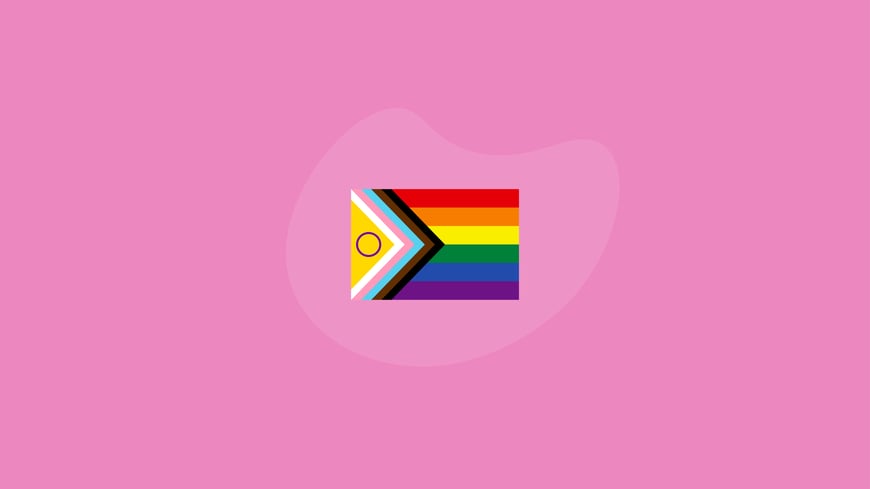Author: Antoinette Morris
Posted: 13 Jun 2023
Estimated time to read: 4 mins
In today's diverse educational landscape, creating inclusive classrooms is essential to ensure that all students feel safe, valued and supported.
As we celebrate Pride Month, it's important to consider which strategies we can use to create inclusive learning environments for LGBTQ+ students. By implementing these strategies, we can empower LGBTQ+ students to thrive academically and personally, while promoting acceptance and respect among all learners. Keep reading to the end for a list of useful resources.
1. Establish a safe and supportive environment
Creating a safe and supportive classroom environment is the foundation for inclusivity. Educators can:
- Set clear expectations: Establish guidelines that emphasise respect, kindness, and acceptance for all students, regardless of their sexual orientation or gender identity.
- Promote open dialogue: Encourage students to ask questions, share experiences, and engage in discussions about LGBTQ+ topics in a respectful and supportive manner.
- Address bullying and discrimination: Implement zero-tolerance policies for bullying and discrimination based on sexual orientation or gender identity. Take immediate action to address any incidents and make sure you have a system in place for students to report anything they encounter when you aren't around.
2. Educate yourself and others
To effectively support LGBTQ+ students, educators must educate themselves and others about LGBTQ+ identities, experiences, and challenges. Consider the following:
- Professional development: Seek opportunities for professional development to enhance understanding of LGBTQ+ issues in education. Attend workshops, conferences, or webinars that focus on LGBTQ+ inclusive practices.
- Stay informed: Stay updated on LGBTQ+ terminology, current research, and best practices in LGBTQ+ inclusive education. Explore reputable resources, books, and websites that provide valuable insights.
- Engage in self-reflection: Reflect on personal biases and assumptions that may influence interactions with LGBTQ+ students. Foster a growth mindset and be open to learning and growth in this area.

3. Incorporate LGBTQ+ inclusive content
Infuse LGBTQ+ inclusive content throughout the curriculum to reflect the diversity of experiences and identities. Consider the following approaches:
- Diverse literature: Include LGBTQ+-themed books, articles, and poetry in your classroom library. Highlight LGBTQ+ authors and their contributions to literature.
- LGBTQ+ history and contributions: Integrate LGBTQ+ history and achievements into relevant subject areas, highlighting influential LGBTQ+ figures in fields such as science, arts, and social activism.
- Intersectionality: Teach about the intersectionality of identities, acknowledging that students may have multiple aspects to their identities beyond their LGBTQ+ status.
4. Supportive resources and networks
Connect LGBTQ+ students and their families with appropriate resources and networks to enhance support and promote well-being. Consider the following steps:
- LGBTQ+ student organisations: Encourage LGBTQ+ students to participate in LGBTQ+ student organisations or clubs within the school or local community. These groups provide a supportive network and a sense of belonging.
- LGBTQ+ community centres: Share information about local LGBTQ+ community centres that offer counselling services, support groups, and resources for students and their families.
- LGBTQ+ helplines and online resources: Provide students with information about helplines and online resources specifically tailored to support LGBTQ+ youth, such as LGBTQ+ youth chat platforms, crisis hotlines, and mental health resources.
Creating inclusive classrooms requires intentional efforts from educators to support LGBTQ+ students. By establishing a safe and supportive environment, educating oneself and others, incorporating LGBTQ+ inclusive content, and connecting students with supportive resources and networks, educators can foster a sense of belonging and empowerment among LGBTQ+ students. As we celebrate Pride Month, let's commit to creating educational environments where all students can thrive, regardless of their sexual orientation or gender identity. Together, we can make a positive difference and promote inclusivity in education.
Here are some useful resources to support you in creating inclusive classrooms for LGBTQ+ students:
- GLSEN (Gay, Lesbian & Straight Education Network): GLSEN is a leading organisation focused on creating safe and inclusive K-12 schools for LGBTQ+ students. Their website offers a wide range of resources, including research reports, lesson plans, and professional development opportunities for educators.
- Teaching Tolerance: Teaching Tolerance provides free resources for educators to promote inclusivity, respect, and empathy in schools. They offer lesson plans, classroom activities, and articles specifically addressing LGBTQ+ issues and creating inclusive environments.
- Welcoming Schools: Welcoming Schools, an initiative by the Human Rights Campaign Foundation, provides resources and professional development to elementary schools for embracing family diversity, preventing bias-based bullying, and supporting LGBTQ+ students.
- GLAAD: GLAAD is a leading LGBTQ+ media advocacy organisation that offers educational resources and guides for educators. Their resources cover topics like inclusive language, supporting transgender students, and creating LGBTQ+-inclusive curriculum.
- Gender Spectrum: Gender Spectrum provides resources, training, and support for educators to create gender-inclusive and supportive environments for all students, including transgender and non-binary students.
- PFLAG (Parents, Families, and Friends of Lesbians and Gays): PFLAG offers resources and support for families, educators, and communities to create safe and inclusive environments for LGBTQ+ individuals. Their education resources provide guidance for supporting LGBTQ+ students.
- The Trevor Project: The Trevor Project is a leading organisation providing crisis intervention and suicide prevention services for LGBTQ+ youth. Their website offers educational resources, including guides for supporting LGBTQ+ youth in educational settings.
Happy Pride Month!

